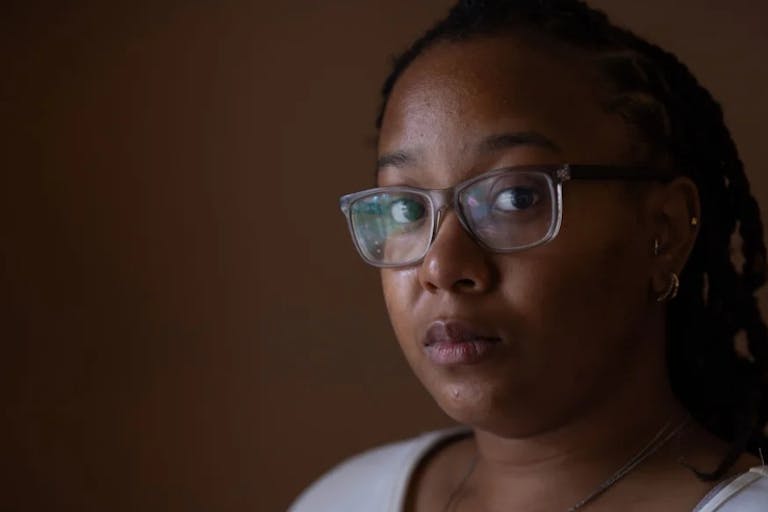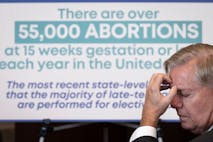
FACT CHECK: Are pro-life laws to blame for arrest of SC woman who delivered baby in a toilet?
Nancy Flanders
·We are urgently seeking 500 new Life Defenders (monthly supporters) before the end of October to help save babies from abortion 365 days a year. Your first gift as a Life Defender today will be DOUBLED. Click here to make your monthly commitment.

Women don’t need abortion. They need support.
An article published by In These Times makes the claim that without wide access to abortion following the fall of Roe v. Wade, lives will be thrown into “disarray.” While every new parent must adapt and change how they live in one way or another, it doesn’t mean that mothers — even those facing the biggest challenges — need to resort to killing their preborn children in order to keep their lives on track.
The article focuses on one mother — Lationna Halbert, the mother of a four-year-old son with her boyfriend Kendall. Halbert was working at a school IT job for $8.50 an hour, doing hair and makeup on the side, and planned to attend cosmetology school. Her hormonal birth control implant had expired, and she couldn’t afford to replace it, as it cost $300 just to have it removed. It is unclear if she used other types of birth control in the interim, such as condoms, but she became pregnant about a month later. Halbert didn’t think she was going to get pregnant that quickly. Upon learning of her baby, she said, “I cried, I cried, I cried. It was a surprise. Lord, it was a surprise.”
She had wanted to be married, have a steady job, a new car, a house instead of an apartment, and a better school system before she had another baby. But she didn’t avoid sex, and when she helped to create a new life, she decided she wanted an abortion. She called Jackson Women’s Health Organization — the very abortion facility in Mississippi at the center of Dobbs v. Jackson Women’s Health Organization, the case that ended Roe. But it was July 2022, the Dobbs decision had been handed down, and Mississippi’s pro-life trigger law was in effect. The abortion business was closed. She considered going out of state, but the price was too high. The abortion cost $700, and more would have been required to travel there and back. Like anyone who becomes pregnant, Halbert would have to pivot and adjust her life to accommodate her new baby.
But Halbert was facing the possibility of utter poverty. She had no paid maternity leave, and a partner who made $18 an hour and had to take on side jobs. Her life goals were put on hold. In These Times claimed that in this new post-Dobbs world, her story is a “glimpse of things to come, on a massive scale… foreshadowing the economic harm as yet untold numbers of people will endure and the dreams a new generation will be forced to put aside.”
But it never had to be this way and it still doesn’t. Though there is room for improvement within the systems that exist, Halbert has real choices and real support available to her and her baby. She just won’t find them in pro-abortion organizations.
Painting a grim picture of what life is like for women giving birth to children they didn’t plan, In These Times looked to the incredibly flawed Turnaway Study in an attempt to prove that lack of abortion puts and keeps women such as Halbert in poverty. But that study used a minuscule starting sample size, with additional women dropping out in large numbers. Only 27% of the women recruited, who were hand-picked by abortion facility employees, actually agreed to participate after receiving an incentive to do so. In the end, only 17% of the women remained in the study. The women who reported the most negative abortion experiences and the least amount of relief from their abortions were the ones most likely to drop out. It’s impossible to draw clear conclusions when your participants refuse to participate.
The reality is, wide contraception use and legalized abortion have led to what’s now known as the feminization of poverty. Women in the United States are 35% more likely than men to be poor. Single mothers face the highest risk of living in poverty; 30.6% of households headed by single mothers live in poverty, compared to less than 15% of households headed by a man, and about five percent of households headed by a married couple. Five million more women than men were poor in 2012, and it seems that since abortion was legalized, this problem has only increased.
In “Poverty and Abortion: A Vicious Cycle,” the United States Conference of Catholic Bishops explained, “Beginning in the 1990s, groundbreaking research has found that the ‘technology shock’ of widely available contraception and abortion has increased out-of-wedlock births. Previously, it was widely accepted that an unexpected pregnancy out-of-wedlock should lead a man to offer marriage.” However, the USCCB noted that once contraception and abortion became widely available, that same pregnancy came to be seen as solely the woman’s responsibility and problem. The man’s obligation now ends with an offer to pay for an abortion. If the woman refuses the abortion, she is left alone to be a single mother.
Since the rate of divorce and breakup after an abortion increases by as much as 75%, according to the deVeber Institute, any woman who already has a child at the time of the abortion is now at an increased risk of being a single mother, just like the woman who refused the abortion.

Halbert has support from her mother who comes by after work to help her, but Halbert and Kendall seemed to be at odds with one another. He argued that he has it harder than she does because he works long hours. Halbert said her situation is more difficult, because she is at home all day with a newborn.
“I wish I was a dad [rather] than a mom,” she said, “because they get to get up and leave the house whenever they want to instead of being here with the kids. I feel like I’m in prison.” She was also upset with her post-pregnancy body, and said she doesn’t recognize herself anymore. She said she wanted her old self back.
“I can’t complain, because I’m not providing. I can only sit here and just cope with it until I’m able to get back on my feet and get back to where I need to be at. I really don’t like depending on anybody,” she said.
There are few mothers unable to relate to what Halbert is feeling as the mother of young children. Being a new mother can be isolating, and the natural, societal support systems of the past have been ousted by the new American culture of self-centeredness. Humans are supposed to depend on each other and support each other, but society now tells women that they don’t need men, and vice versa. In addition, women are taught to focus on getting their “old self” or their “old body” back. But in motherhood, women reach a new esteemed status worthy of celebration, and are in need of support in this transition.
Halbert and other women deserve to know that they are capable of achieving their goals and being successful mothers. The notion that killing innocent human beings could somehow end poverty is highly unethical and discriminatory. Rather than being offered death for their children and abortion as a false solution, women should be informed of the resources already available to them.
Additionally, pregnancy centers and pro-life organizations work to fill in the gaps in the emotional and financial support systems for single mothers. There are private programs available and family housing and daycare programs are present on university campuses to help mothers earn their degrees and begin successful careers.
More can — and should — be done, such as incentivizing companies to offer paid maternity leave, paid paternal leave, paid family leave, and health insurance for even part-time employees rather than the current offerings of financial assistance for an abortion. And pro-abortion organizations should not be the go-to source for determining how to help women dealing with unplanned pregnancies. Their method of “family planning” by way of killing, and the false narrative that killing innocent children will lead women to new heights, are only working to keep women and children in poverty.
Live Action News is pro-life news and commentary from a pro-life perspective.
Contact editor@liveaction.org for questions, corrections, or if you are seeking permission to reprint any Live Action News content.
Guest Articles: To submit a guest article to Live Action News, email editor@liveaction.org with an attached Word document of 800-1000 words. Please also attach any photos relevant to your submission if applicable. If your submission is accepted for publication, you will be notified within three weeks. Guest articles are not compensated (see our Open License Agreement). Thank you for your interest in Live Action News!
Dear Reader,
Every day in America, more than 2,800 preborn babies lose their lives to abortion.
That number should break our hearts and move us to action.
Ending this tragedy requires daily commitment from people like you who refuse to stay silent.
Millions read Live Action News each month — imagine the impact if each of us took a stand for life 365 days a year.
Right now, we’re urgently seeking 500 new Life Defenders (monthly donors) to join us before the end of October. And thanks to a generous $250,000 matching grant, your first monthly gift will be DOUBLED to help save lives and build a culture that protects the preborn.
Will you become one of the 500 today? Click here now to become a Live Action Life Defender and have your first gift doubled.
Together, we can end abortion and create a future where every child is cherished and every mother is supported.

Nancy Flanders
·
Analysis
Sheena Rodriguez
·
Human Rights
Cassy Cooke
·
Analysis
Cassy Cooke
·
Analysis
Cassy Cooke
·
Analysis
Cassy Cooke
·
Investigative
Nancy Flanders
·
International
Nancy Flanders
·
Analysis
Nancy Flanders
·
Politics
Nancy Flanders
·
Politics
Nancy Flanders
·